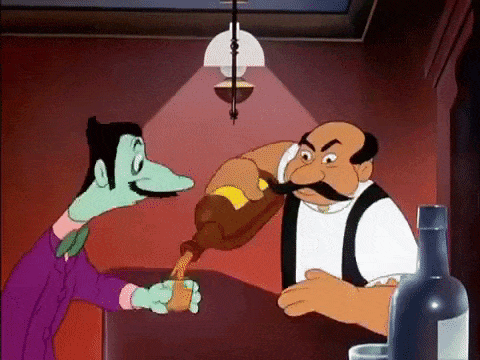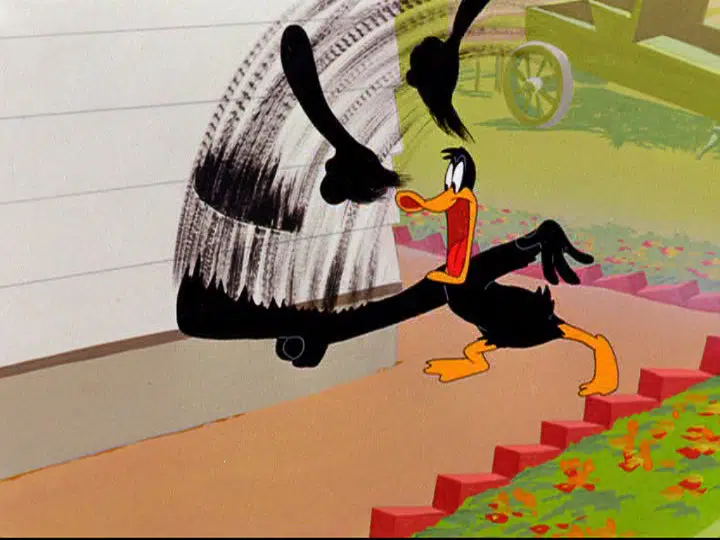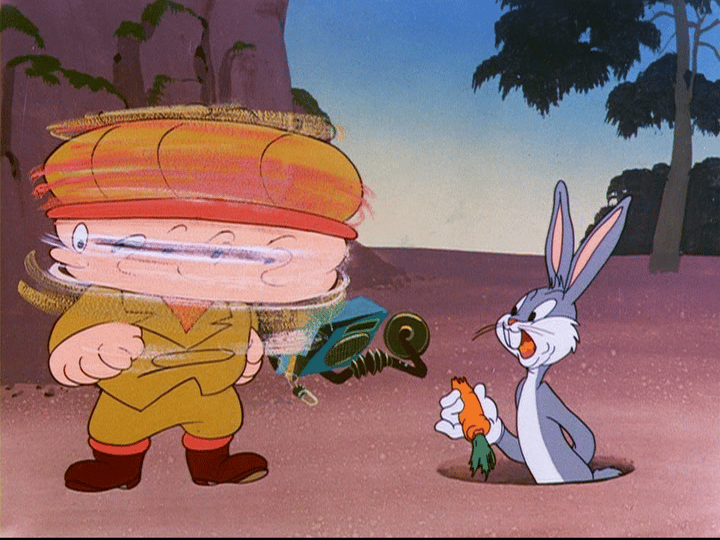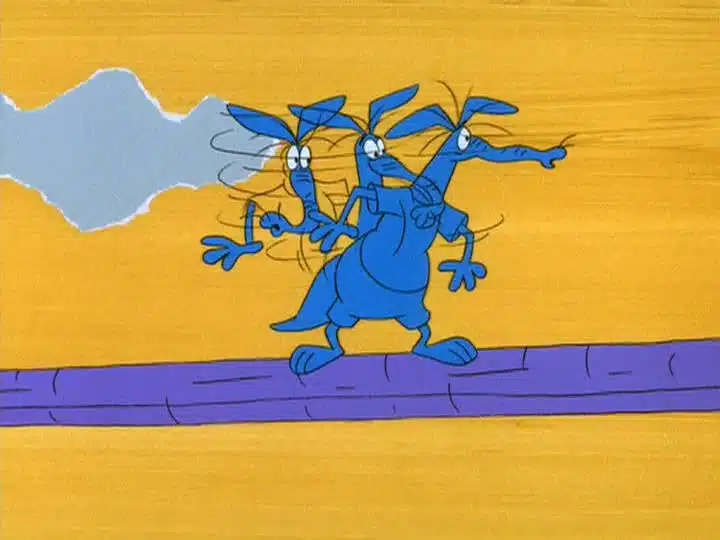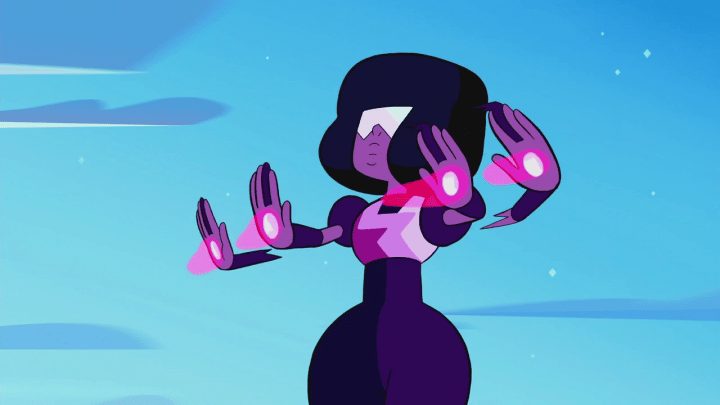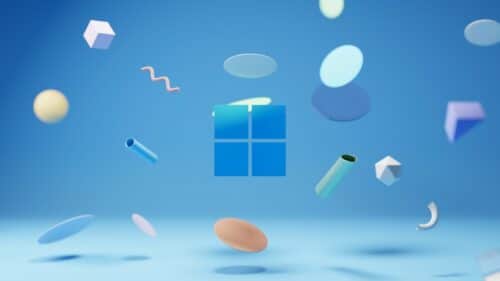High-quality animation usually means using the 12 Principles of Animation developed by Disney. These time-honored techniques make animation look lifelike, smooth, and compelling. And while these animation techniques are the foundation of great animation, that’s not the only way to create professional animation.
Case and point: the “animated smear” technique.
Animation Smear: The Dover Boys at Pimento University (1942)
In 1942, Warner Bros. released an animated short called “The Dover Boys at Pimento University.”
This Merrie Melodies cartoon (produced by Leon Schlesinger and directed by Chuck Jones) is significant for a couple of reasons. “The Dover Boys at Pimento University” was one of the first animated shorts to break away from the so-called “Disney look.” It was also one of the first animations to use the smear technique, which was a game changer for animation in terms of look, style, and production time.
What Is An Animation Smear?
Unlike traditional movement in animation, which uses keyframes (to plot beginning/ending points) and in-between frames (to create the illusion of movement), a “smear” depicts one quick “blur” of motion in a single frame.
Instead of drawing a perfect subject moving through an action in dozens of poses frame by frame, animation smears accomplish the illusion of motion in a single frame, or a short run of frames, placed in between typical keyframes. This “blur” creates the sensation of a sudden burst of speed that gives the animation a sense of frantic pace and action that careful keyframe animation doesn’t quite match. The best part is that your eye doesn’t even notice the difference.
Look at how fast this character “moves” with the smear technique. He’s a literal blur that the bartender’s eyes can barely follow.
Animation Smear vs. Motion Blurs
Every one second of animation is made up of 24 individual frames of animation. While you may “see” all 24 frames-per-second in a typical animation, the human eye can’t actually register each frame as a separate thing. It’s just too fast.
Instead, your brain stitches the frames together into a cohesive picture, creating the illusion of motion, and the source behind animation magic.
What’s even cooler is that this smear technique doesn’t just happen in cartoons. Smears happen in real life all the time. A baseball pitch whizzing past your face. An arrow blurring toward a bullseye. Fidgeting with your pen in the air while you try to think of what to write on a birthday card. Each of these actions creates real-life smears, otherwise known as “motion blurs.”
When an object is moving too fast, your brain can’t process every individual “frame” of motion. Just like in cartoons, motion blurs stitch the motion together into a blur of speed. It’s the exact same principle on, and off, the page.
Now that you know what’s happening, let’s get back to the animation smear technique in practice, and see how it’s used in popular animation.
The Growth & Popularity Of Animated Smears
While the smear technique practically defines the style of classic Warner Bros. cartoons, it wasn’t always so popular. In fact, Chuck Jones’ clever time-saving animation technique was once frowned upon as a “lazy way to depict movement” by the heads of the studio.
According to Jones, the executives at Warner Bros. were so displeased with the his smear technique in “The Dover Boys” that they tried to fire him. However, they wound up keeping him on board after being unable to find a replacement, which turned out to be rather fortuitous for them, and for animation fans alike.
Chuck Jones would go on to write, direct and collaborate on famous Warner Bros. cartoons including “One Froggy Evening,” and “What’s Opera, Doc?” Jones also created some of the most iconic characters in the Looney Tunes universe, like Marvin the Martian, Wile E. Coyote, Pepe Le Pew, and more.
Jones was a pioneer of the smear technique, and thanks to his success at Warner Bros., animation smears caught on as a speedy and stylish way to create quick transitions between keyframes.
The Best Animation Smear Examples
Animation smears create an exaggerated sense of speed and movement, save time and money during the animation process, and just plain look cool. We even used the animation smear technique in our explainer video for Sevanta:
Here are some of our favorite examples of animation smear from yesterday and today.
“The Up Standing Sitter” (1948)
“Hare Do” (1949)
Pink Panther – “Pinkfinger” (1965)
“Odd Ant Out” (1970)
Every Single “Road Runner” Episode. Ever.
Who Framed Roger Rabbit (1988)
The Simpsons – “Some Enchanted Evening” (1990)
Steven Universe “A Cry for Help” (2015)
Animation Technique: Smear
If you’re interested in seeing more animated smear examples, check out “Smears, Multiples and Other Animation Gimmicks” for a comprehensive collection of great examples of this animation technique. Another great site is Animation Smears on Tumblr.
Considering animated video for your business? Get in touch to learn more about IdeaRocket’s unique approach 2D animation, 3D animation, whiteboard, motion graphics and more.

